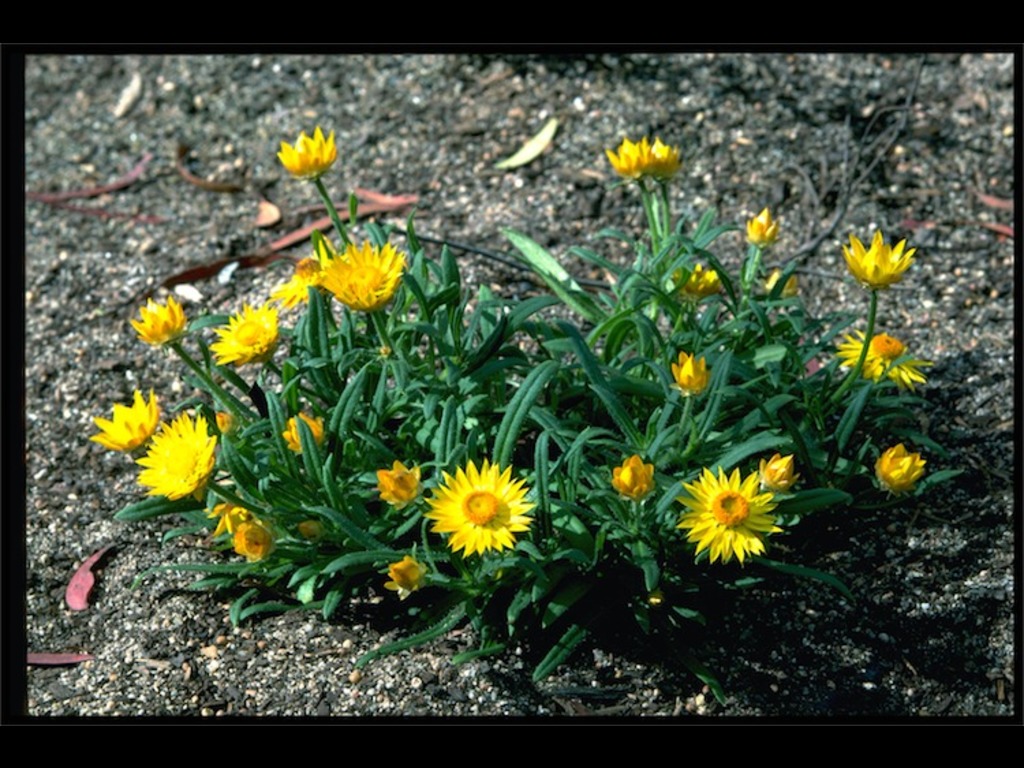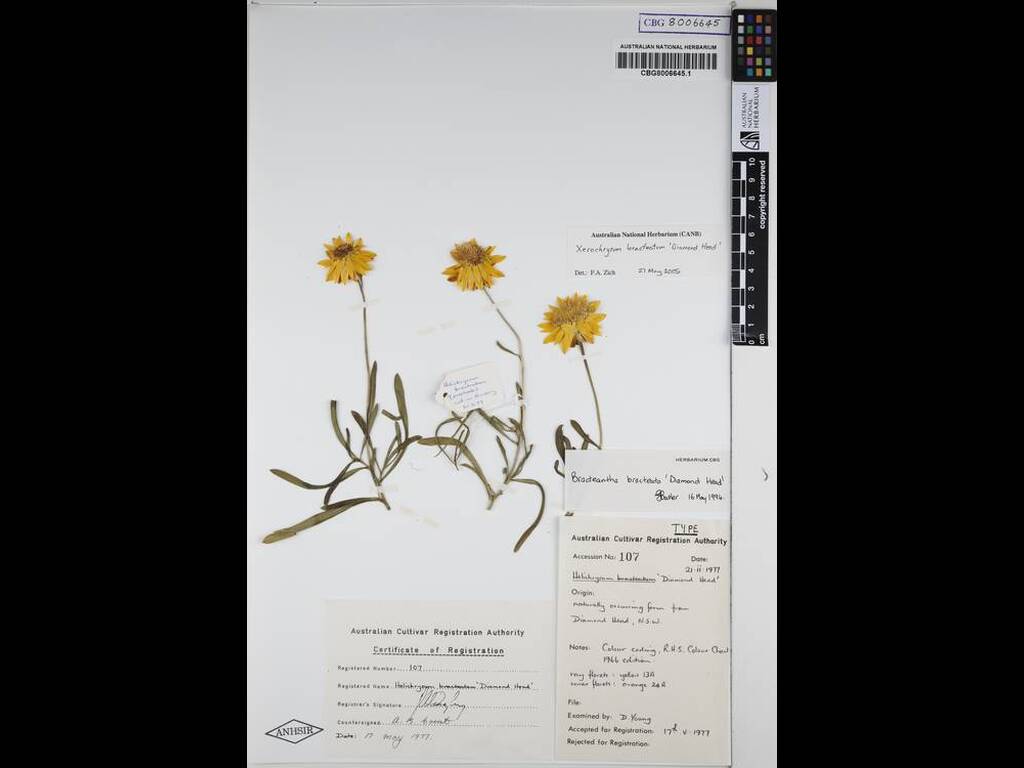Xerochrysum bracteatum 'Diamond Head'
- File Number
- 107
- ACRA Field Book Number
- 107
- Registration Date
- 17/05/1977
- Application Received
- 21/02/1977
- Family
- Asteraceae
- Cultivar Name
- Xerochrysum bracteatum 'Diamond Head'
- Origin
- Xerochrysum 'Diamond Head' is a natural form of X. bracteata which was found at Diamond Head, NSW. Cultivar received by the Authority 21 February 1977. (once known as Bracteantha 'Diamond Head', formerly Helichrysum 'DiamondHead')
- Characteristics
- Owing to the exposed position this plant grows in, it has developed a stable prostrate habit which reduces its height to approximately 8cm. Flower heads are held above the level of the plants adding about 8cm to its height during the flowering season which begins in early November and continues through to mid February. Overall height, therefore, is approximately 16cm. Individual plants will grow to approximately 60cm across and are perennial. Leaves green, approximately 7cm long and about 5mm wide. They are rough to the touch due to a covering on both upper and lower surfaces of short stout hairs. Flowers bright yellow, approximately 3cm across. The ray florets are papery and remain on the plant for some months. The centre of each flower head is orange. DIAGNOSIS:The main feature which distinguishes this cultivar from other forms of <X. bracteatum> is that of its height and perennial habit.
- Cultivation
- Does best in moist loamy soils. Responds well to pruning which makes it an attractive dense shrub with spectacular flowering displays. Best in full sun but will tolerate some shade.
- Publication
- Wrigley, J.W. & Fagg, M. (2003), Australian Native Plants: cultivation, use in landscaping and propagation Edn. 5: 198
- Colour Coding
- RHS Colour Chart 1966 edition.ray florets: yellow group 13A. inner florets: orange group 24A.
- Propagation
- Cuttings
- Applicant Name
- ANBG Canberra.
- Uses
- As part of a mass planting or mixed in a shrubbery, or as a spectacular feature plant or large display pots.
- Availability
- Specialist native plant nurseries
- ANBG Accession Numbers
- ACC107, CBG8007253
- NSL ID
- -

